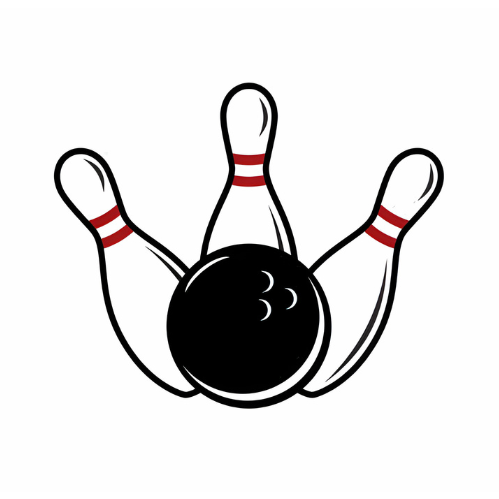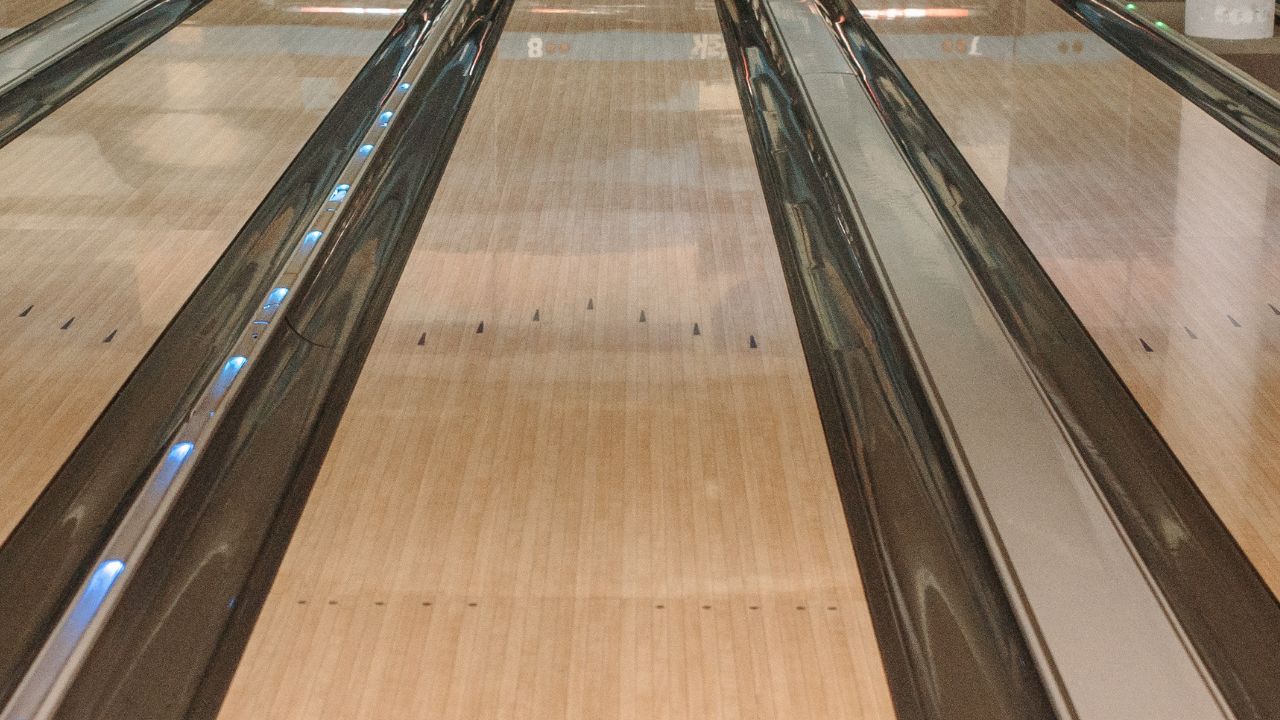A standard bowling alley lane is 41.5 inches (105.4 cm) wide. This width includes the gutters on either side.
Bowling, a popular sport enjoyed by millions, combines skill, strategy, and sometimes a bit of luck. The width of the lane is a critical measurement that impacts gameplay for both casual and professional players. An understanding of the lane dimensions allows bowlers to refine their technique and aim.
Regulation bowling lanes are found in bowling centers and are designed to meet specific standards set by governing associations. The precision in the width ensures fairness and consistency in the game, making it essential knowledge for anyone interested in bowling, whether as a hobby or competitively. By adhering to these dimensions, bowling alleys provide an optimal environment for players to roll their best game.

Credit: www.dimensions.com
Introduction To Bowling Alley Design
When thinking about a bowling alley, it’s more than just pins and balls. It’s a complex design that combines functionality with entertainment. The width of a bowling lane plays a crucial role in this design. It must meet specific standards for optimal play. In this section, we dive into the world of bowling alleys and their design elements.
Understanding The Game Of Bowling
Bowling is a beloved sport enjoyed globally. Players roll a ball towards pins, aiming to knock as many down as possible. It’s a mix of skill, precision, and sometimes a bit of luck. The space where this action happens is key to the enjoyment and fairness of the game.
Key Components Of A Bowling Alley
A bowling alley has many parts, all working together. Let’s break it down:
- Lane: The main path where the ball slides.
- Approach Area: Players start their throw here.
- Gutters: These are on both sides of the lane. Missed balls fall here.
- Pins: Ten objects at the lane’s end, the main targets.
- Pinsetter: This machine sets pins up after each throw.
- Scoring System: Keeps track of points.
- Seating Area: Where players sit while waiting.
Specifications Of A Bowling Alley Lane
Are you curious about the exact size of a bowling alley lane? Understanding these measurements is key to appreciating the sport. Let’s dive into the specifics.
Standard Dimensions Of A Bowling Lane
The standard width of a bowling lane is 41.5 inches from foul line to pins. This does not include the gutters. The bowling lane measures 60 feet from the foul line to the head pin. Including the approach area, the total length is about 87 feet.
The following table provides a clear breakdown of these standard dimensions:
| Zone | Length | Width |
|---|---|---|
| Lane | 60 feet (from foul line to head pin) | 41.5 inches |
| Approach Area | 15 feet | 41.5 inches |
| Total Length | 87 feet (including approach and pin deck) | 41.5 inches |
Variations In Lane Width
Most bowling lanes follow the standard width. Some alleys, designed for private homes or unique venues, may have narrower lanes.
- Standard width: 41.5 inches
- Custom home alley: vary in width, often narrower
Regulations And Governing Bodies
The United States Bowling Congress (USBC) sets rules for lane dimensions. The World Bowling oversees regulations internationally.
- USBC certifies lanes in the USA.
- World Bowling governs international standards.
Bowling alleys must comply with these regulations for official play. Such standards ensure fair competition worldwide.
Implications Of Lane Width On Play
The width of the bowling lane greatly affects how players approach the game. A standard lane measures about 41.5 inches in width, but slight variations can present different challenges. Understanding these dimensions ensures players adjust their technique effectively. Let’s delve into the intricacies of lane width on play.
The Role Of Lane Width In Bowling Strategies
Bowling strategies evolve with the awareness of lane width. Bold bowlers might dominate wider lanes using strong hooks. Precision players flourish on narrower surfaces, aiming meticulously at the pins. The lane width sets the stage for various tactical approaches:
- Optimal ball angles: Manipulating ball trajectories suits the space provided.
- Lane play style: Deciding between an aggressive or conservative strategy.
- Ball selection: Choosing equipment that complements the lane.
How Professionals Adapt To Different Lane Sizes
Pro bowlers excel by adapting to lane size variances. They scrutinize the width to craft their game plans. Recognizing the impact of these dimensions is crucial:
- Analyze the oil pattern spread across the varying widths.
- Adjust finger positions for optimal grip and release.
- Refine speed and rotation to harness the lane’s character.
Maintenance And Impact On Lane Conditions
Maintenance routines preserve lane integrity. Supervisors ensure lanes remain within official width specifications. To maintain uniform play surfaces:
| Task | Frequency | Impact on Conditions |
|---|---|---|
| Cleaning | Daily | Maintains surface friction and cleanliness. |
| Oiling | Before leagues and events | Ensures consistent ball movement and protection. |
| Inspection | Periodically | Identifies issues like warping that can alter width. |

Credit: www.courtdimensions.net
Designing And Constructing A Bowling Alley
When we dive into the world of bowling, it’s not just strikes and spares that count. The very ground you roll your ball on matters.
Building a bowling alley involves precision and a deep understanding of the game’s needs. Let’s explore the nuts and bolts of what it takes to create that perfect lane.
Materials And Engineering Of Bowling Lanes
The anatomy of a bowling alley lane is a marvel of modern engineering. It’s not just wood laid down; it’s a symphony of materials working together.
- Maple and Pine: Traditional lanes feature hard maple wood at the front and softer pine for the rest.
- Synthetic Lanes: As a cost-effective alternative, many opt for synthetic materials that mimic wood’s resilience.
- Coatings: A specialized coating protects the lane’s surface, ensuring smooth, consistent play over the years.
Challenges In Bowling Alley Construction
Constructing a bowling alley comes with its set of hurdles. Alignment and leveling are paramount. Even a slight deviation can affect a bowler’s game.
A perfect flat surface is non-negotiable.
| Challenge | Solution |
|---|---|
| Wood Warping | Using seasoned wood and climate control. |
| Humidity Effects | Installation of dehumidifiers. |
| Wear and Tear | Regular maintenance and resurfacing. |
Modern Innovations And Custom Bowling Alleys
Innovation keeps the fun of bowling fresh and exciting. We now see lanes equipped with LED lights, interactive games, and personalized designs.
Custom bowling alleys cater to both entertainment and professional needs.
- Interactive Technology: Systems track balls and generate graphics for an immersive experience.
- Personal Touch: Options for personalized lane artwork and color schemes.
- Robust Software: Automatic scoring and lane management for seamless operations.

Credit: www.fusionbowling.com
FAQ
What Is The Width Of A Bowling Lane?
The standard width of a bowling lane is 41. 5 inches (105. 4 cm). This measurement includes the lane but excludes the gutters on either side.
How Much Space Is Needed For A Bowling Lane?
A standard bowling lane requires approximately 88 feet in length and 11 feet in width.
What Are The Dimensions Of A 5 Pin Bowling Lane?
A standard 5 pin bowling lane measures 62 feet (18. 9 meters) in length and 41. 5 inches (1. 05 meters) in width.
How Thick Is Bowling Alley Wood?
Bowling alley wood typically measures about 2 inches in thickness. This robust construction ensures durability and consistent ball rolling for an ideal bowling experience.
Conclusion
Understanding the dimensions of bowling alley lanes helps enthusiasts and professionals alike. Standard lanes are typically 41 to 42 inches in width. This knowledge is crucial for players aiming to perfect their game. Embrace these specifics to enhance your bowling experience and achieve those striking scores!

